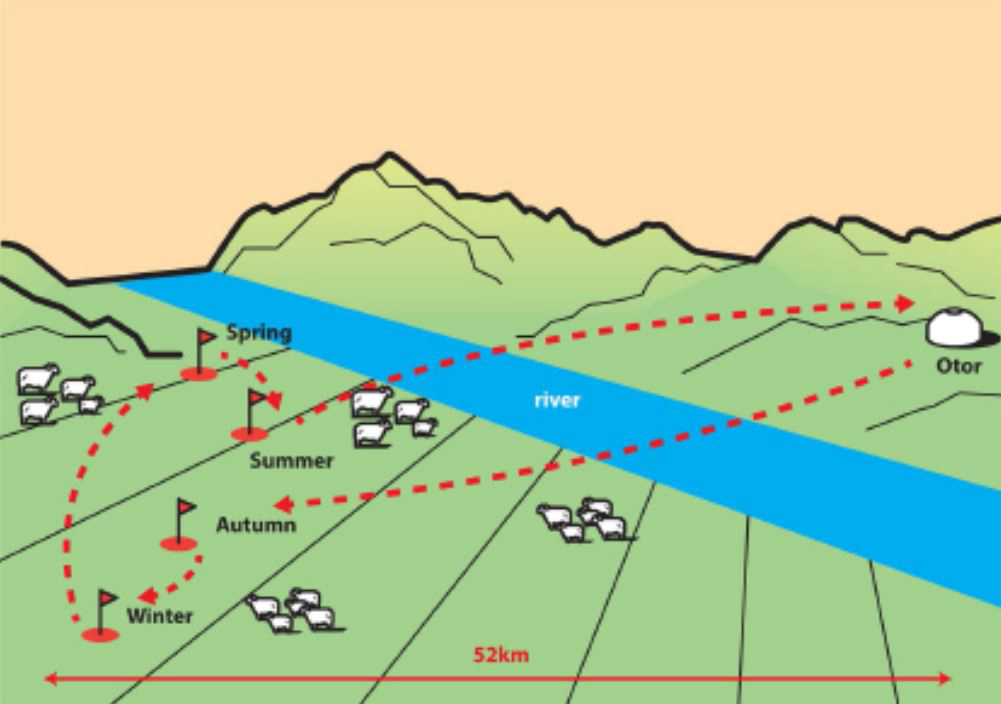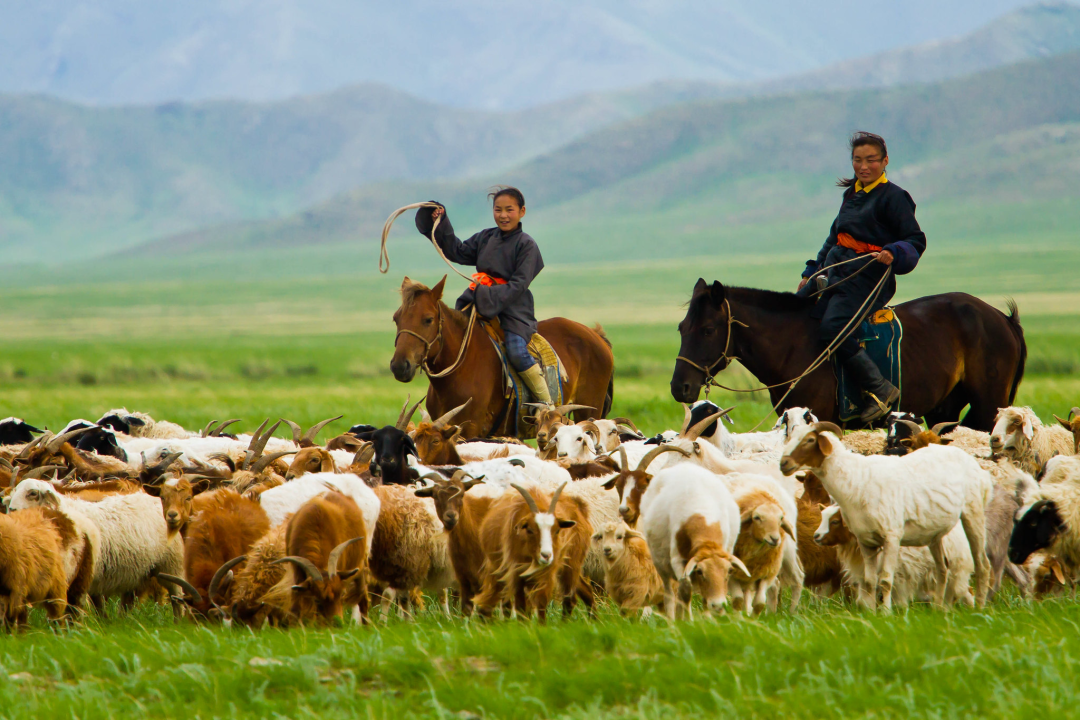Challenge statement
Challenge type: If you are working on multiple challenges, please indicate if this is your "big bet" or "exploratory" challenge.
Please note: we ask you to only submit a maximum of 3 challenges - 1x Big Bet, 2x Exploratory. Each challenge must be submitted individually.
BIG BET
Challenge statement: What is your challenge? (Please answer in specific terms: "Our challenge is that...”.)
Our challenge is that natural resource user groups´ livelihoods are not sustainable since there is no equilibrium between natural regeneration cycle and human needs.
Background: What is the history of your challenge? What is causing or driving it? Who is involved? How does the current situation look like? What undesired effects does it produce?
The fundamental problem at hand revolves around the disturbed equilibrium between interconnected ecological and social thresholds, creating a detrimental cycle. Moreover, a reduction in the mobility of herders and an increase in livestock ownership contribute to excessive grazing, pushing ecological limits to exacerbate land degradation and vegetation loss. Other natural resources user groups, for instance forest user groups, also struggle to ensure the regeneration cycle of nature so that their way of life and productive activities can be sustain in the long run. Consequently, the traditional livelihoods of herders and other groups are endangered, as they must choose between persisting in progressively challenging circumstances or relocating to urban areas. This transition across the social threshold gives rise to densely populated cities, pressuring social services and job markets.
Quantitative evidence: What (official) data sources do you have on this challenge that better exemplifies the importance and urgency of this frontier challenge? You can add text, a link, or a picture.
- The livestock sector represents 14.5% of the GDP.
- 1/3 of the population are herders approximately 160,000 households, and 28,9% employment.
- Herding represents 90% of the agriculture sector (71 million animals).
- 32% of herder households are in poverty.
- 80% of the landscape is grazed beyond capacity.
Qualitative evidence: What weak signals have you recently spotted that characterizes its urgency? Please provide qualitative information that better exemplifies the importance and urgency of this frontier challenge. You can add text, a link, or a picture.
• Individual level: herder households
Herding andother natural-based productive activities are transitioning from being a lifestyle to a market production system. Thus, livestock and other natural resource products are moving from a subsistence approach to a yield-focused one, and this is influencing the decision-making process of herders and other natural resources user groups and accelerating the negative loop.
Herders and other groups utilizing natural resources are hesitant to relocate over extended distances or with high frequency due to concerns about land loss or a preference to stay near markets. Also, they are failing to coordinate with other herders to organize the rotation of pastures which leads to overgrazing and accelerated land degradation. Due to consistently low production returns, herders are compelled to prioritize animal quantity over quality, also other
natural resources user groups tend to overexploit natural stocks, such as berries. Thus, disrupts the natural regeneration cycle, resulting in decreased long-term productivity.
• Environment system level: climate change
Climate change is turning the dryland and grassland landscape into a new scenario with extreme weather and natural disasters: like dzud (snowstorms followed by severely cold temperatures cause an impenetrable layer of ice stopping livestock to graze), hotter seasons (air temperature has increased by 2.24°C in 70 years), fatal floods, droughts, and raging fires. As a result, the
regeneration cycle of nature is broken, and herding strategies exacerbate this condition; thus, there is a lack of sufficient water and grass throughout the year to keep all livestock healthy and well-fed.
• Political system level: main policies to address pasture-related problems and use of natural resources.
Leasing and certification of land for winter and spring camps. Most of the time herders adopt this policy since they want to legalize the land where their parents herded, avoid future land conflicts, and invest in fencing and winter shelters.
Establishing a community-based rangeland management approach and Pasture use planning. The result of this policy is mixed some herders join pasture user groups, while others resist. There are positive outcomes for those joining, the biomass of pastures is higher, the burden of the preparation work for winter/spring is
better distributed, and there are more returns to livestock products.
Livestock tax. This mechanism has not been sufficient to control the increasing number of livestock and overgrazing across common pastures, neither has raised awareness on herders to prioritize animal quality over quantity, nor has had a significant impact on the environment.
Lack of an effective legal framework to manage natural resources. There is an absence of effective policies to manage common natural resources (pastures, water, forests) which poses a significant challenge. Without proper laws and policies, these resources are exposed to overexploitation and depletion. This lack of regulation is leading to conflicts among various user groups, jeopardizing the sustainability of the resources. Inadequate policies are hindering the equitable distribution of benefits and favoring certain stakeholders over others. Additionally, without well-defined policies, there is a lack of incentives for conservation efforts or sustainable practices. In essence, the dearth of efficient policies undermines the long-term health and viability of shared natural resources.
• Social system level: support system
Human capital constraints. Herders lack access to information, knowledge, and technology to make their herding strategic decision more assertive. Also, the herder population is aging, and the new generations might not be interested to carry with the tradition. Overall, the level of education is low among herders
which adds a barrier to accessing information.
Social capital limitations. Herders have little experience with collective action and the government support they get is not sufficient to build a new habit of cooperation. Low bonding ties among herders and scarce social networks limit their information exchange.
Market dynamics and economic constraints. Herders tend to acquire high debts and have no savings, lack access to livestock insurance, lack machinery for herding and storage infrastructure, and have limited opportunities for income diversification. Moreover, the market for livestock products is poorly developed (wool and animal skins are not considered market goods), there is a lack of logistics systems to easily connect herders to markets, and there is no price differentiation for higher product quality.
Value proposition: What added value or unique value proposition is your Accelerator Lab bringing to solving this challenge? Why is it your Lab that needs to work on this challenge and not other actors within UNDP, other stakeholders in the country respectively? Why is it worth investing resources to this challenge?
This portfolio exercise intends to contribute to a transition from subsistence herding and other natural-based productive activities to a sustainable production mechanism while preserving culture and tradition, protecting
environment preservation, and ensuring wellbeing.
The Lab is leading the work on the office to apply the portfolio approach and find coherence and structure among projects that are working on this goal.
Short “tweet” summary: We would like to tweet what you are working on, can you summarize your challenge in a maximum of 280 characters?
Contribute to a transition from subsistence herding and other natural-based productive activities to a sustainable production mechanism while preserving culture and tradition, protecting environment preservation, and ensuring wellbeing. From project management to system transformation.
Learning questions
Learning question: What is your learning question for this challenge? What do you need to know or understand to work on your challenge statement?
We are supporting the office to learn how to transition from project management to system transformation and test whether UNDP´s efforts have a long-lasting impact by using the portfolio approach.
To what stage(s) in the learning cycle does your learning question relate?
Sense, Explore
Usage of methods: Relating to your choice above, how will you use your methods & tools for this learning question? What value do these add in answering your learning question?
To implement the portfolio approach, it's essential to comprehensively grasp the core problem from a systematic perspective. Additionally, a thorough exploration of project specifics is required to identify potential synergies and opportunities for collaboration.
Existing data gaps: Relating to your choice above, what existing gaps in data or information do these new sources of data addressing? What value do these add in answering your learning question?
The problem is not just existing gaps of data but assumption behind the system shift.
From an inefficient market to a well-developed market that can commercialize all the derivatives of livestock products (wool, skin, blood, bones, among others).
From a weak industry to a strong industry that can process all the derivatives of livestock products.
From a market relying on intermediation to a direct relationship between producers and buyers.
From meeting only domestic demand to finding an international niche for free-range livestock products.
From national regulations to international standards for trading with foreign partners.
From an ineffective logistics system bringing urban and rural areas closer to a well-connected system.
Closing
Early leads to grow: Think about the possible grow phase for this challenge - who might benefit from your work on this challenge or who might be the champions in your country that you should inform or collaborate with early on to help you grow this challenge?
There are three shifts that this portfolio exercise is aiming to achieve:
(Shift 1) Herders and other natural resources user groups´ way of life, customs, and traditions should be compatible with their immersion in a raising market economy and environmentally changing world.
(Shift 2) The government will find effective mechanisms to implement policies that support herders in this immersion while preserving nomadic pastoralism culture and the environment.
(Shift 3) Markets and government at the national and local levels will work together to design and implement a logistics system, commercialization strategy, and production mechanism to add value to all derivatives from livestock products.
To do so project will pilot in two territorial locations how to work collaboratively and find synergies between projects (Ikh Uul soum and Tosontsengel soum).
END OF ACTION LEARNING PLAN: Thank you! The form saves automatically and your submission has been recorded. You may now exit this window.




 8Decent work and economic growth
8Decent work and economic growth 15Life on land
15Life on land
Comments
Log in to add a comment or reply.